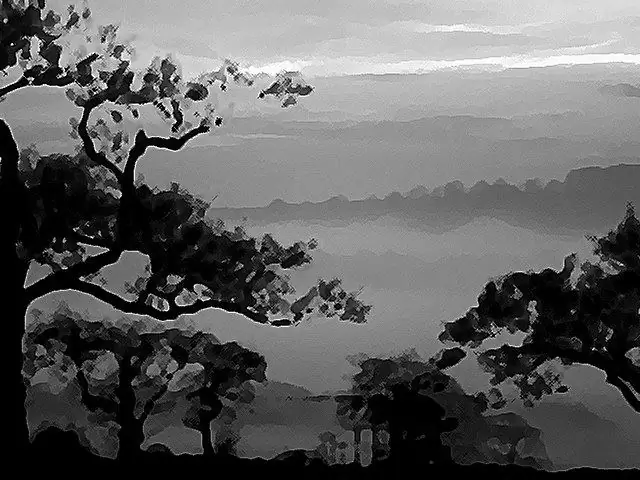Nature is a wonderful artist herself. She creates unique works of art that delight the eye and evoke a storm of emotions. When painting landscapes, you should use numerous shades of the same color to convey the fullness of the colors. It is necessary to convey the igura of light and shadow, then the picture will come to life.

It is necessary
Sketchbook, easel, graphite pencils, charcoal, wide brush for erasing charcoal, eraser, drawing paper
Instructions
Step 1
It is best to paint landscapes from nature. Go out of town and grab a sketchbook with pencils, charcoal, paper and an eraser. You need to take an easel so that it is more convenient to contemplate the beauty of nature and draw them on paper. Choose a landscape you like and put an easel. Attach paper to it.
Step 2
Make a sketch. You can do it with charcoal or pencil. Erase unsuccessful details made with a pencil with an eraser, and erase with charcoal with a special wide brush. Draw the basic outlines of the landscape. Determine where is the background and where is the foreground.
Step 3
Start by painting the sky. Do not spare the shades for him, because a beautifully painted sky is the most important detail of the picture. Explore the landscapes of Levitan in advance. It is not for nothing that they call him "the poet of heaven."
Step 4
Draw a detail that would "introduce" you into the picture. It is good if it is a path, a road, a path, the edge of a forest edge or a ray of sun penetrating into the thicket. Be sure to use the ground strokes. If it is a seaside, draw sandy paths or surf tracks.
Step 5
Link the foreground and background in some way. It can be grass of different heights: in the foreground it is high, and in the background it is lower. Decorate the sea beach with stones. Place boulders in the foreground, and gradually shrinking pebbles in the background.
Step 6
Be sure to convey the play of light and shadow. The shadows cast by trees and large objects must be positioned correctly. They should stretch in the same direction and, accordingly, the time of day. The play of chiaroscuro perfectly reflects how the wind moves through the leaves of the trees. Remember this technique. Light and shadow can, like nothing else, "revive" a picture.
Step 7
When the main points are captured, start drawing the details. If you were unable to complete the painting in one go, come to the same place at the same hour of the day so that the landscape retains its basic features. It would be nice if the weather remained the same. But even when the weather changes, there are pluses, the picture can acquire additional shades and become richer.






